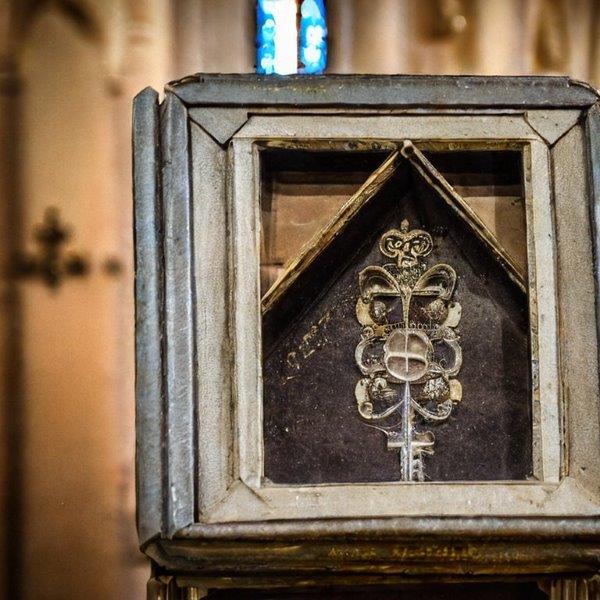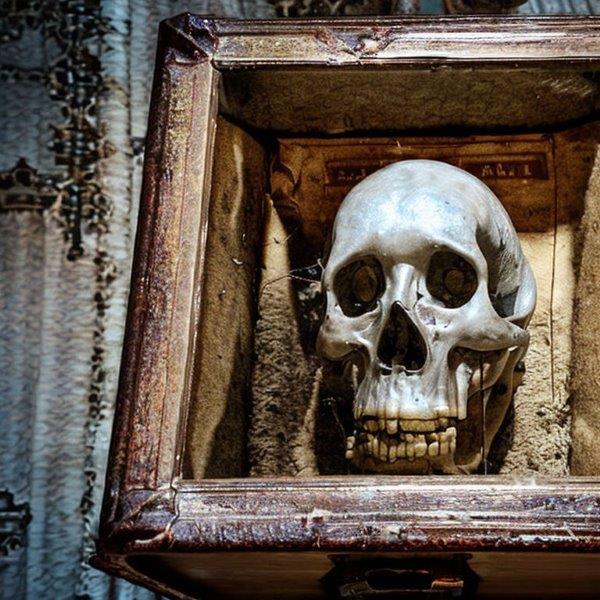Religious Education
What is a relic?
What is a relic?
 A relic is an object that has a special connection to a saint or other holy person, and is considered to be a sacred object within Catholicism. Relics are often thought to possess spiritual power, and they are sometimes believed to have the ability to perform miracles or to offer spiritual protection.
A relic is an object that has a special connection to a saint or other holy person, and is considered to be a sacred object within Catholicism. Relics are often thought to possess spiritual power, and they are sometimes believed to have the ability to perform miracles or to offer spiritual protection.
Relics have a long history within Catholicism, and they have been used in various ways throughout the centuries. Some relics are physical objects that were once owned or used by a saint, such as a piece of clothing, a book, or a piece of jewelry. Other relics are objects that have come into contact with a saint or holy person, such as a piece of cloth that has been touched to a relic of the True Cross.
What is the True Cross and why is it a relic?
The True Cross is the name given to the wooden cross upon which Jesus Christ was crucified. According to tradition, the True Cross was discovered in the 4th century by the Roman Empress Helena, the mother of Emperor Constantine, who is credited with converting to Christianity and making it the official religion of the Roman Empire.
According to the story of the discovery of the True Cross, Helena traveled to Jerusalem and excavated the site of the crucifixion. She is said to have found three crosses, and she was able to determine which one was the True Cross by performing a miracle. According to tradition, a woman who was near death was able to be healed when she was placed on the True Cross, which helped to confirm that it was the cross upon which Jesus was crucified.
The True Cross has been revered as a sacred relic within Christianity, and it has played a significant role in the history of the Church. In the Middle Ages, it was believed that possession of a fragment of the True Cross could offer protection against evil and bring blessings to those who possessed it. As a result, many churches and monasteries claimed to possess fragments of the True Cross, and it became a popular object of devotion for Christians.
Today, the True Cross is still revered as a sacred relic within Catholicism, and it is often venerated by believers who believe in its special spiritual power. Many Catholics believe that the True Cross is a powerful symbol of the sacrifice of Jesus Christ, and that it can offer blessings and protection to those who are devoted to it.
How do Catholics use relics?
 There are many different ways in which Catholics use relics. Some Catholics may pray to a relic or ask for its intercession in times of need, while others may simply touch a relic in order to draw upon its spiritual power.
There are many different ways in which Catholics use relics. Some Catholics may pray to a relic or ask for its intercession in times of need, while others may simply touch a relic in order to draw upon its spiritual power.
Relics are often displayed in churches or other sacred spaces, and they may be venerated by Catholics who believe that they can offer spiritual benefits or protection. In some cases, Catholics may make pilgrimages to visit a particular relic or to pray at a shrine that is associated with a relic.
In addition to being used in individual devotion, relics are also often used in the celebration of the sacraments. For example, a relic may be placed on the altar during the celebration of the Eucharist, or it may be used in the anointing of the sick.
The use of relics within Catholicism is based on the belief that the saints and holy people of the Church are in a special relationship with God, and that they possess a special spiritual power that can be shared with others.
Why do Catholics pray to relics?
In Catholicism, relics are objects that have a special connection to a saint or other holy person, and are considered to be sacred. Relics are often thought to possess spiritual power, and they are sometimes believed to have the ability to perform miracles or to offer spiritual protection.
The use of relics in Catholicism is based on the belief that the saints and holy people of the Church are in a special relationship with God, and that they possess a special spiritual power that can be shared with others. Relics are seen as a way to connect with the saints and to draw upon their spiritual power in order to gain blessings and protection.
Where are relics displayed?
Relics are often displayed in churches or other sacred spaces, such as chapels, monasteries, or shrines. In some cases, relics may be displayed in a special area of the church, such as in a reliquary or on the altar. In other cases, relics may be displayed in a separate chapel or shrine that is dedicated to a particular saint or holy person.
Relics may also be displayed in museums or other public spaces, and they may be visited by believers who wish to venerate them. In some cases, relics may be carried in procession or displayed during special religious events or ceremonies.
Relics are often considered to be sacred objects within Catholicism, and they are often treated with great reverence and respect. As such, they are often displayed in a way that is appropriate for their status as sacred objects, and they may be surrounded by symbols of holiness, such as candles, flowers, or other decorations.
The display of relics can vary widely, depending on the context and the particular relic in question. Some relics may be displayed in ornate, decorative reliquaries, while others may be displayed more simply. The importance of a relic and the way it is displayed may also depend on the significance of the saint or holy person with which it is associated, as well as the beliefs and practices of the particular community or group of believers that venerates it.
Are there different types of relics?
 There are many different types of relics within Catholicism, including:
There are many different types of relics within Catholicism, including:
- First-class relics: These are relics that are parts of the body of a saint, such as a bone or a piece of clothing that the saint wore.
- Second-class relics: These are relics that were owned or used by a saint, such as a book or a piece of jewelry.
- Third-class relics: These are relics that have come into contact with a first-class relic, such as a piece of cloth that has been touched to a relic of the True Cross.
How are relics preserved?
Relics are often preserved in a variety of ways, depending on the type of relic and the circumstances in which it is being preserved. Some common methods of preserving relics include:
Encasing the relic in a protective covering: Relics may be placed in a reliquary, which is a decorative container that is specifically designed to hold and protect a relic. Reliquaries are often made of metal, glass, or other materials that are resistant to damage and deterioration.
Storing the relic in a controlled environment: Relics may be stored in a place that is protected from extreme temperatures, humidity, and other environmental factors that could damage the relic. This may involve storing the relic in a climate-controlled room or in a special storage facility.
Displaying the relic in a way that protects it from damage: When relics are displayed, they may be placed in a location where they are protected from physical damage or from being handled too much. For example, relics may be displayed in a case or behind glass to protect them from damage.
Repairing or restoring the relic: If a relic is damaged, it may be repaired or restored in order to preserve it. This may involve techniques such as cleaning, reinforcing, or repairing the relic.
It is important to note that the preservation of relics is often a delicate process, and it requires careful planning and attention to detail in order to ensure that the relic is protected and preserved for future generations.
What are the top five most popular relics in Catholicism?
There are many relics within Catholicism that are considered to be particularly popular or significant, and which are venerated by believers around the world. Some of the most well-known and popular relics within Catholicism include:
- The True Cross – the wooden cross upon which Jesus Christ was crucified, which is considered to be one of the most important relics in Catholicism
- The Shroud of Turin – a linen cloth that is believed by some to be the burial shroud of Jesus, which is venerated by Catholics as a relic
- The Crown of Thorns – a crown of thorns that is believed to have been worn by Jesus during his Passion, which is venerated as a relic in the Notre Dame Cathedral in Paris
- The Holy Lance – a spear that is believed to have been used to pierce the side of Jesus during his Passion, which is venerated as a relic in the Imperial Treasury in Vienna
- The Ark of the Covenant – the sacred chest that is described in the Bible as containing the tablets of the Ten Commandments, which is venerated by some Catholics as a relic.
These are just a few examples of the many relics within Catholicism that are considered to be particularly popular or significant. There are countless other relics that are revered and venerated by Catholics around the world, and which play an important role in the spiritual lives of believers.
